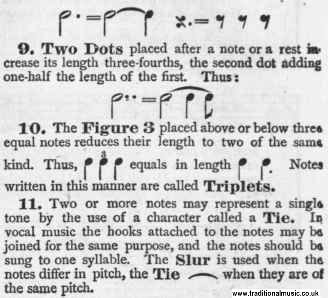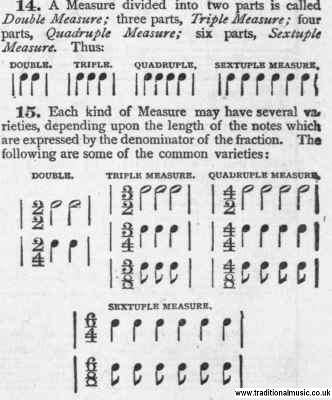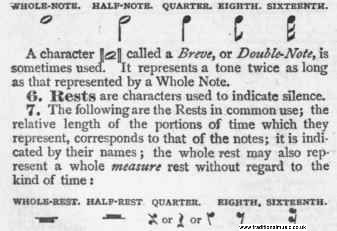Favorite Songs and Hymns For School and Home, page: 0372
450 Of The World's Best Songs And Hymns, With Lyrics & Sheet music for voice & piano.
| Share page | Visit Us On FB |
|
Elements of Music |
|||
|
1. A Musical Sound is called a Tone.
2. Every tone has the three properties of Length, Pitch, and Power.
3. There are, therefore, three departments in the Elements of Music :�
i. Rhythmics, treating of the Length of Tones.
2. Melodies, treating of the Pitch of Tones.
3. Dynamics, treating of the Power of Tones.
The word Rhythmics is derived from the Greek verb "rAeo," meaning to /low, as in the measured movement of poetic lines. Melod'ics is from the Greek " melod'eo," to sing harmoniously, or " me-lod'ia," a tune to which lyric poetry is set, a choral song, from " mel'odos," musical or melodious. Dy�namics is from the Greek " dun'amai," to be able, or " dun'amis" force, energy, power.
Rhythmics comprehends all rhythmic things, or whatever may be derived from the primary fact that tones may be long or short It includes also the rhythmic structure of phrases, sections and periods. Melodies includes everything that may proceed from the primary distinction of low or high, or from the property of pitch. The word "melody," as com�monly used, is of much more limited signification, referring only to a pleasing succession of tones in rhythmic order or to an ordinary tune form. Dy�namics embraces not only the mere force of tones, but also their manner or form of delivery. |
 |
||
|
9. Two Dots placed after a note or a rest m> crease its length three-fourths, the second dot adding one-half the length of the first. Thus:
r=rTc
10. The Figure 3 placed above or below threa equal notes reduces their length to two of the samt
kind. Thus, trf equals in length P ■� Noto
written in this manner are called Triplets.
11. Two or more notes may represent a singla tone by the use of a character called a Tie. Id vocal music the hooks attached to the notes may ba joined for the same purpose, and the notes should ba sung to one syllable. The Slur is used when tha notes differ in pitch, the Tie *�*s when they are ol the same pitch.
MEASURES AND PARTS.
12. Music is divided into Measures and
Parts�into Measures by single bars and into Parts by double bars. The time of each measure is tha same as that of every other measure in the part and is determined by the fraction placed at the beginning of each part. If a part is to be repeated, dots, called Repeating Dots, precede the double bar.
13. Measures are again divided into certain parts, which may be indicated to the ear by Counting, as "one, two," "one two," etc.; or to the eye by motions of the hand, called Beats, or Beating Time. The length of notes may frequently be estimated, but in complicated movements, it must be indicated as above by some simple method of measurement
14. A Measure divided into two parts is called Double Measure; three parts, Triple Measure; four parts, Quadruple Measure; six parts, Sextuple Measure. Thus: |
|||
|
RHYTHMICS: Length of Tones.
NOTES AND RESTS.
4. Notes are characters used to designate two things: By their position on the staff they give the Pitch of the tone, and by their form they indicate its Length.
5.. The following are the notes in common use, the relative length of the tones which they represent being indicated by their names.
WHOLE-NOTE. HALF-NOTE. QUARTER. EIGHTH. SIXTEENTH. |
|||
 |
|||
 |
|||
|
A character \a\ called a Breve, or Double-Note, is sometimes used. It represents a tone twice as long as that represented by a Whole Note.
6. Itests are characters used to indicate silence.
7. The following are the Rests in common use; the relative length of the portions of time which they represent, corresponds to that of the notes; it is indi�cated by their names; the whole rest may also rep�resent a whole measure rest without regard to the kind of time:
WHOLE-REST. HALF-REST QUARTER. EIGHTH. SIXTEENTH.
-�- �- Xorjorr *7 3
For brevity and convenience, we shall hereafter speak of the length of notes, meaning the length of the tones represented by them.
8. A Dot placed after a note or a rest increases its length one-half. A dotted whole note is equal to three halves; a dotted half to three quarters. The sam.; is true of Rests. Thus: |
|||